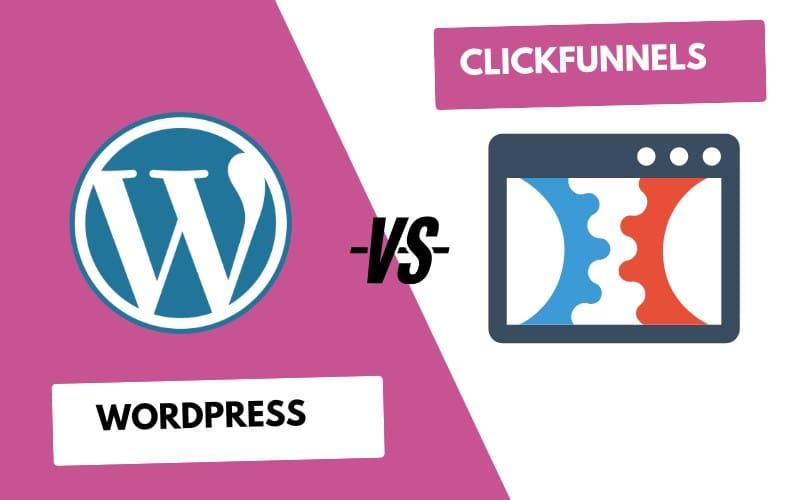After diving into how Framer stacks up against Webflow and Wix, today, we’re turning our focus to another popular website builder: Showit. Whether you’re a designer looking for creative freedom or a business owner seeking ease of use, this comparison will help you decide which platform suits your needs best. So without further ado, let’s get into the Framer vs Showit showdown.
Who Are They For?
Let’s start by figuring out who these tools are really made for.
Framer is like that fancy Swiss Army knife in the hands of a designer. If you’re someone who loves having complete control over every pixel and enjoys creating custom, interactive designs, Framer is your playground. It’s perfect for developers and designers who want to build something truly unique and aren’t afraid to get a little technical.
Showit, on the other hand, is the go-to for creatives who are more interested in visual storytelling than coding. Think photographers, bloggers, and small business owners who want a beautiful, user-friendly site without the hassle of learning code. Showit offers a design-centric approach that allows you to craft stunning websites effortlessly, using a drag-and-drop interface that feels intuitive and accessible.
Features Comparison
| Feature | Framer | Showit |
| User Interface | Modern, highly customizable | Intuitive, drag-and-drop simplicity |
| Template Availability | Limited, custom design from scratch | Extensive library of beautiful templates |
| Custom Code Support | Full access to custom code | No direct access to custom code |
| Responsive Design | Fully responsive with customization | Automatic with drag-and-drop adjustments |
| Animation and Interactions | Advanced custom animations | Limited interaction options |
| SEO Tools | Full control, advanced customization | Basic SEO settings, easy to use |
| Performance | Optimized for fast loading times | Generally good but can be heavy |
| E-commerce Capabilities | Basic integrations available | Limited e-commerce features |
| Customer Support | Email support, active community | Live chat and email support, large knowledge base |
| Pricing | Flexible pricing plans | Higher pricing, depending on usage |
Ease of Use
When it comes to getting started, the learning curve can make or break your experience.
Framer is powerful, no doubt about it. But with great power comes a bit of a learning curve. It’s not as intuitive out of the box, especially if you’re not familiar with design tools. However, this complexity is also what gives Framer its edge—it’s a designer’s dream for building fully custom, interactive websites. If you’re willing to invest some time in learning the ropes, Framer will reward you with unmatched creative freedom.
Showit, meanwhile, is all about simplicity. Its drag-and-drop interface is a breeze to use, even if you’ve never designed a website before. Everything is visual, so you don’t need to worry about code at all. You can easily move elements around, tweak layouts, and see your changes in real-time. It’s a fantastic option if you’re looking to get a beautiful site up and running quickly without the steep learning curve.
Design and Customization
Let’s talk design, where both platforms really shine in their own ways.
Framer offers unmatched customization. It’s like a blank canvas where you can bring any design to life with pixel-perfect precision. Whether it’s intricate animations, responsive layouts, or unique interactions, Framer gives you the tools to create exactly what you envision. The sky’s the limit here, making it a favorite among designers who want total control over every aspect of their site.
Showit might not offer the same level of customization, but what it does offer is a vast library of beautifully designed templates that are incredibly easy to tweak. If you’re not looking to reinvent the wheel, Showit’s pre-built templates give you a head start, allowing you to customize them to match your style. Plus, these templates are fully responsive, so your site will look great on any device, right out of the box.
Responsive Design
Speaking of responsive design, both Framer and Showit have you covered, but they go about it in different ways.
Framer lets you fine-tune your site’s responsiveness down to the smallest detail. You can create custom layouts for different devices, ensuring that your site looks and functions perfectly no matter where it’s viewed. It’s a bit more hands-on, but this approach gives you complete control over how your site adapts to various screen sizes.
Showit simplifies the process. It offers customizable mobile views with easy drag-and-drop adjustments, so you can ensure consistency across devices without getting into the weeds. It’s a user-friendly approach that makes responsive design accessible to everyone, even if you’re not a tech whiz.
SEO and Performance
Now, let’s dive into the technical side with SEO and performance.
Framer gives you full control over your site’s SEO. You can manually add meta tags, alt text, and fine-tune the HTML to optimize your site for search engines. This level of control is great if you’re serious about SEO and want to implement a custom strategy. Plus, Framer’s clean code and optimized assets mean your site will load quickly, providing a seamless user experience that search engines love.
Showit makes SEO easy, even for beginners. It comes with built-in SEO tools that guide you through the process of optimizing your site. You don’t need to know anything about meta tags or alt text—Showit prompts you to add these elements as you go. While it may not offer the same level of customization as Framer, it’s definitely user-friendly and effective for most small to medium-sized websites. Performance-wise, Showit sites are generally quick, though the speed can vary depending on the complexity of your design.
E-commerce Capabilities
Both platforms offer ways to integrate e-commerce, but they’re built with different types of users in mind.
Framer provides basic e-commerce integrations, making it suitable for small to medium-scale online stores. If you need something more robust, you might find Framer’s e-commerce capabilities a bit limited, but for simpler setups, it’s more than sufficient.
Showit excels in this area, particularly for creatives. It integrates seamlessly with Shopify, allowing you to add a fully-featured online store to your site. This makes it a fantastic option for photographers, artists, or bloggers who want to sell products directly through their site without any fuss.
Pricing Comparison
| Feature / Plan | Framer | Showit |
|---|---|---|
| Free / Trial | Framer offers a Free plan: limited features, a “.framer.app” domain, “Made in Framer” banner, etc. | Showit offers a 14-day free trial, no credit card required. |
| Entry/Basic Paid Plan | 💡 Mini plan at about US$5/month (if billed annually) for simple sites. | Showit “Basic Plan” for just the website (no blog): ~ US$19/month when billed annually or ~$24/month if monthly. |
| Intermediate / Blog-capable Plans | Basic plan (Framer) is ~ US$15/month (annual billing) with more pages, CMS collections, etc. | Showit’s “Website + Basic Blog” ~ US$24/month annual (~US$29 monthly) includes blog features, etc. |
| Higher / Advanced Plans | Pro plan for Framer: ~ US$30/month annual (higher limits on pages, visitors, CMS etc.). | Showit’s “Advanced Blog” plan: ~$US$39/month annual (~US$34 depending on promotions) includes more advanced blog hosting, higher traffic allowance. |
| Business / Enterprise-Level Custom Plans | Framer has Business / Enterprise plans for larger teams, more pages, more editors, higher limits. Custom pricing. | Showit has higher-traffic and more advanced blog options; for very high traffic or advanced custom setups you’d need to contact them. |
| Billing Options | Monthly or annual for personal plans. Business/Enterprise usually annual. Extra charges possible (editors, usage). | Monthly or annual. Annual billing gives discount. |
| What’s Included / Key Differences | • Framer includes CMS collections; limits vary by plan. • Custom domain only with paid plans. • Free plan has “Made in Framer” branding. | • Showit includes web hosting, 20 GB media storage, SSL (HTTPS), regular design backups. • The blog tiers differ in how many visits they support, and what WordPress plugin capabilities are allowed. |
| Typical Use-Case / Who It’s Best For | Framer is good if you want flexibility in design + CMS + more control over traffic, features. If you expect to scale and need more complex site features, going up to Pro / Business gives more headroom. | Showit is very strong for creatives, bloggers, designers who want visually-rich sites + blog integration, especially if you use WordPress for the blog portion but want the design flexibility Showit offers. Might be simpler if your needs are more blog-centric or design-centric rather than feature-heavy. |
Support and Community
No one wants to be left hanging when they hit a roadblock, so support is key.
Framer has a rapidly growing community of passionate designers and developers. You’ll find plenty of tutorials, forums, and resources to help you out. Plus, their support team is responsive and eager to assist, which is always a big plus.
Showit boasts a well-established support system, with 24/7 customer service available through chat or email. Their knowledge base is extensive, filled with articles, tutorials, and guides. The Showit community is also incredibly active, sharing tips, tricks, and inspiration that make it easy to find help when you need it.
Use Cases and Recommendations
So, which platform should you choose? It really boils down to what you need.
If you’re a designer or developer who values creative freedom and wants to build something truly custom, Framer is your best bet. It’s perfect for creating unique, highly interactive websites that stand out from the crowd.
If you’re a photographer, blogger, or creative looking for a beautiful, user-friendly site with minimal effort, Showit is a fantastic option. It’s designed to make your work shine without the hassle of coding or complicated design tools.
Which Tool Won Here?
In the Framer vs Showit matchup, well, there’s no clear winner. Both platforms have their strengths and are suited to different types of users. Framer offers ultimate design flexibility, making it ideal for creative professionals who want to push the limits. Showit shines in ease of use and design quality, perfect for users who want a visually stunning site without the complexity.
Don’t hesitate to dive into these platforms to see which one feels right for you, and keep following our Framer Series for more insights and comparisons. Happy designing!






